Enrique Olvera is a busy man. Between operating his flagship restaurant Pujol (currently sitting at number thirteen on the list of the World’s 50 Best restaurants), overseeing Cosme and Atla in New York City, nurturing his chain of Eno cafes, partnering in Criollo in Oaxaca, appearing on numerous television shows, publishing a new cookbook, cooking at festivals and private events, opening two new restaurants in Los Angeles, and caring for his family, he manages to squeeze in developing new menus and visiting Manta, his restaurant at The Cape in Cabo San Lucas, Mexico. And he carries the load of a culinary superman with the cool air of someone who spent his morning poolside, which is often the case if you catch him on a day at his latter property. When I call him to discuss my recent trip to Baja I hear car horns in the background; he’s fitting in our conversation on his walk to see his seafood purveyor. His tone is relaxed. I imagine he’s waving jovially to wide-eyed children like a rockstar casually aware of his status.
“I started going there in the early 2000s,” Olvera says of Cabo San Lucas. “The combination of the desert and the sea is so beautiful, very elegant, minimalistic. Baja scenery appealed to me instantly.” However, when first approached to open a restaurant at The Cape, he refused. “I love Los Cabos. I [wanted] to keep Los Cabos for leisure not for work,” he reasons. With a little coaxing from his friends and business partner, he relented on one condition: the restaurant would open only for dinner service.
Olvera garnered his reputation after the premiere season of Chef’s Table on Netflix, soaring to fame for putting ants on a tasting menu and presenting mole, brazenly unadorned, on a dinner plate. The proximity to the U.S. and lower cost of the tasting menu at Pujol made it also one of the most approachable restaurants on the 50 Best list. I count myself as one of the legions that booked a ticket to Mexico City to see what the hubbub was about. I made my reservation at the restaurant weeks before even purchasing the flight.
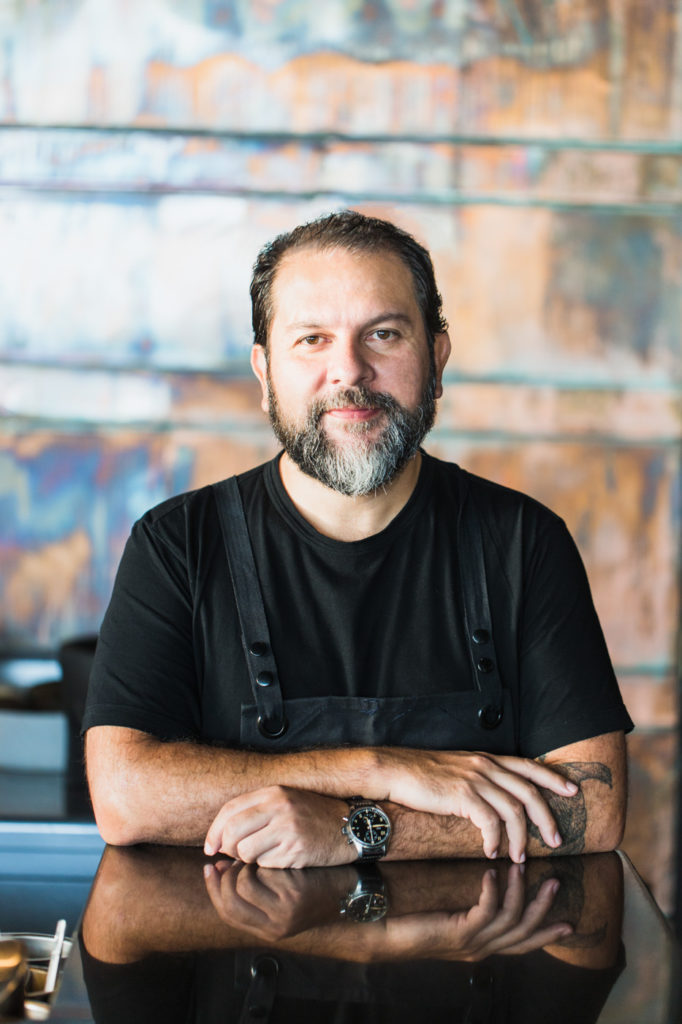
Where Pujol is higher stakes, Manta creates an atmosphere of ease, a product of the barefoot attitude of beachside denizens and Olvera’s desire to preserve Cabo as his own personal vacation destination. The seafood-focused menu draws inspiration from Japan and Peru, while keeping one foot firmly planted in Mexico.
The secret to Olvera’s accomplishments may not rely solely on the science of layering ingredients on a plate, but on the chemistry between the people behind those ingredients as well. Speaking with each purveyor, it becomes clear they’re not just work associates; they’re friends. And good ones. They collaborate, they ideate, they even party together. Olvera succeeds in cultivating and maintaining strong friendships with his colleagues and suppliers, decades-long bonds the normal, unexceptional, non hyper-performing of us aspire to have. If food brings people together and creates friends out of strangers, Olvera has tapped into that philosophy, mining that vein and emerging a rich man.
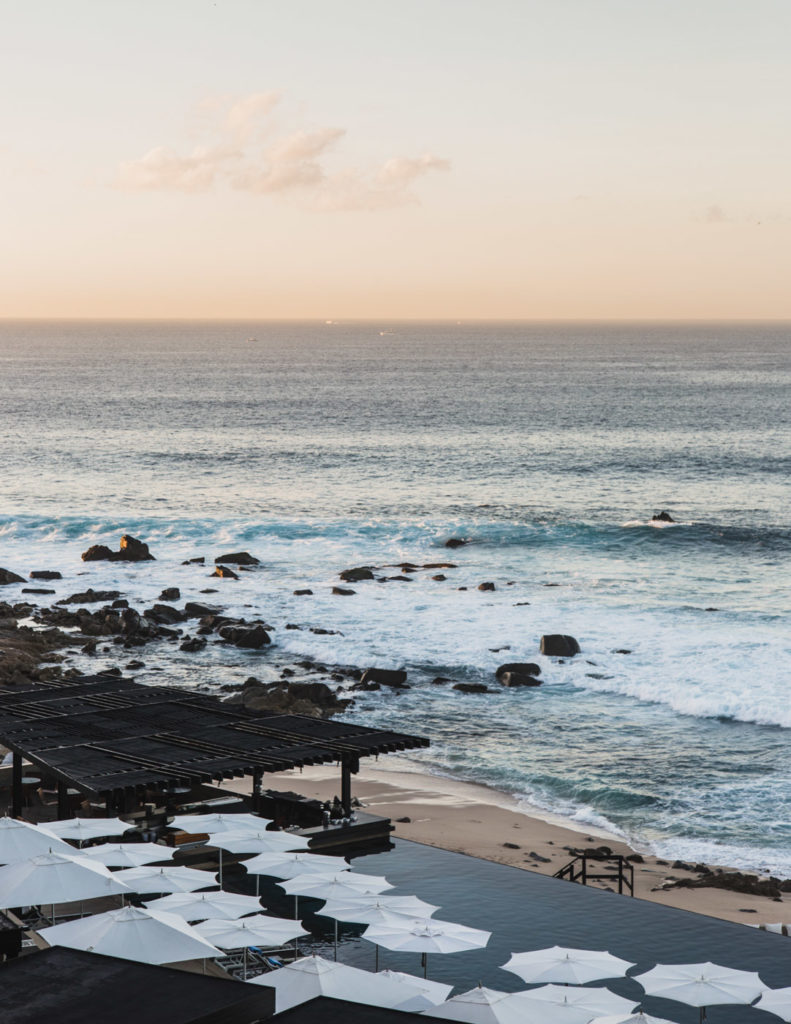

At Sea
Our ship rumbles out of the harbor. The coast recedes. I’m sharing the hair-tousling breeze with one of the best chefs in the world, who is currently kicking back with a can of Pacifico. Plates with tiny conical baby clams, briny and snappy like pickled carrots, make the rounds. A kind of nigiri taco emerges; slices of San Carlos clam, a sliver of umeboshi (salted plum), and lightly seasoned rice perch on a circle of mustard leaf. Then, an aphrodisiacal alchemy: oyster, topped with uni, topped with caviar and a kiss of wasabi plummets me into a daydream. The decadence and the simplicity overwhelm my little world for an instant.
We cruise lazily back and forth from port to the sun-touched stone arches of Los Arcos, the sea-carved outcropping looking particularly golden on the second pass, after healthy pours of crisp French rosé and another helping of oyster shooters. I chat with Ezequiel Hernandez—Olvera’s seafood purveyor—a talkative, joyful man evoking a Parisian with a yellow smock shirt, newsboy cap, and silk scarf tied artfully around his neck.
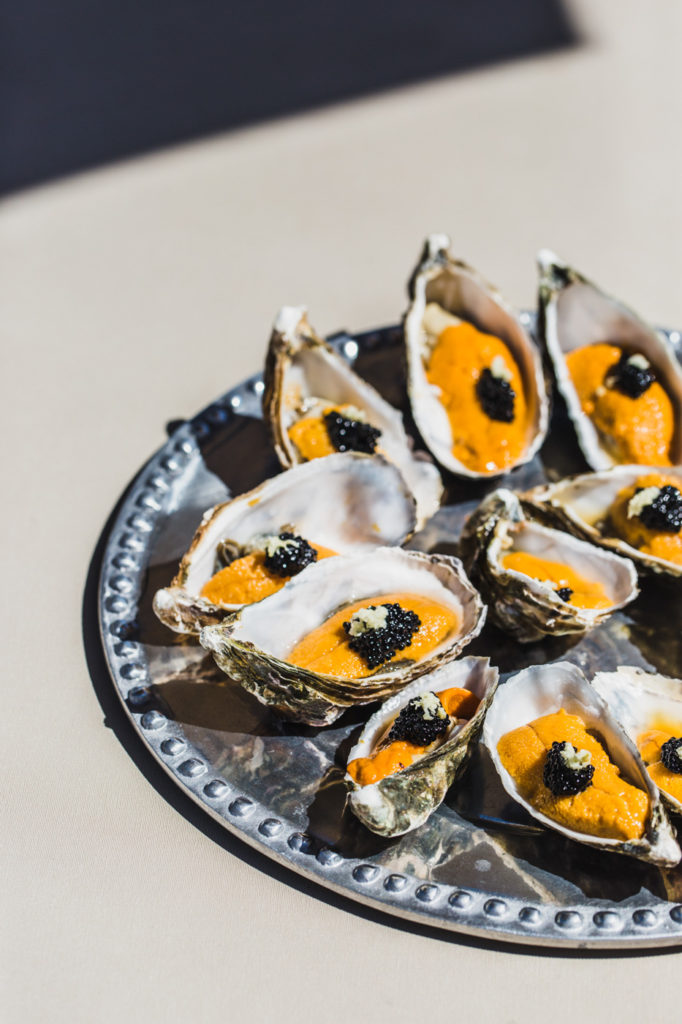
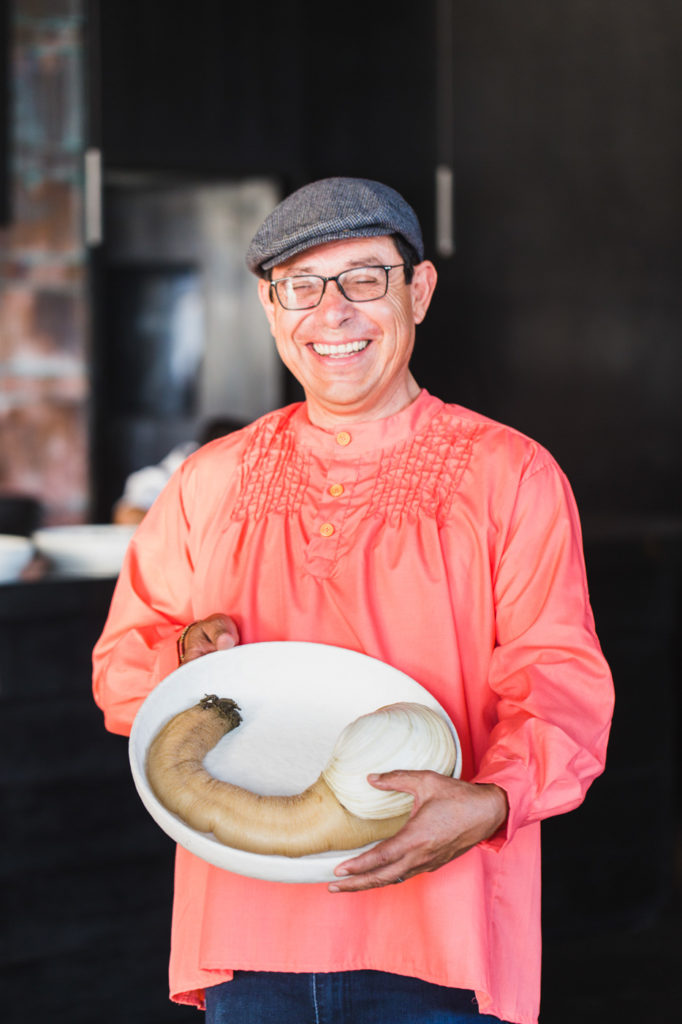
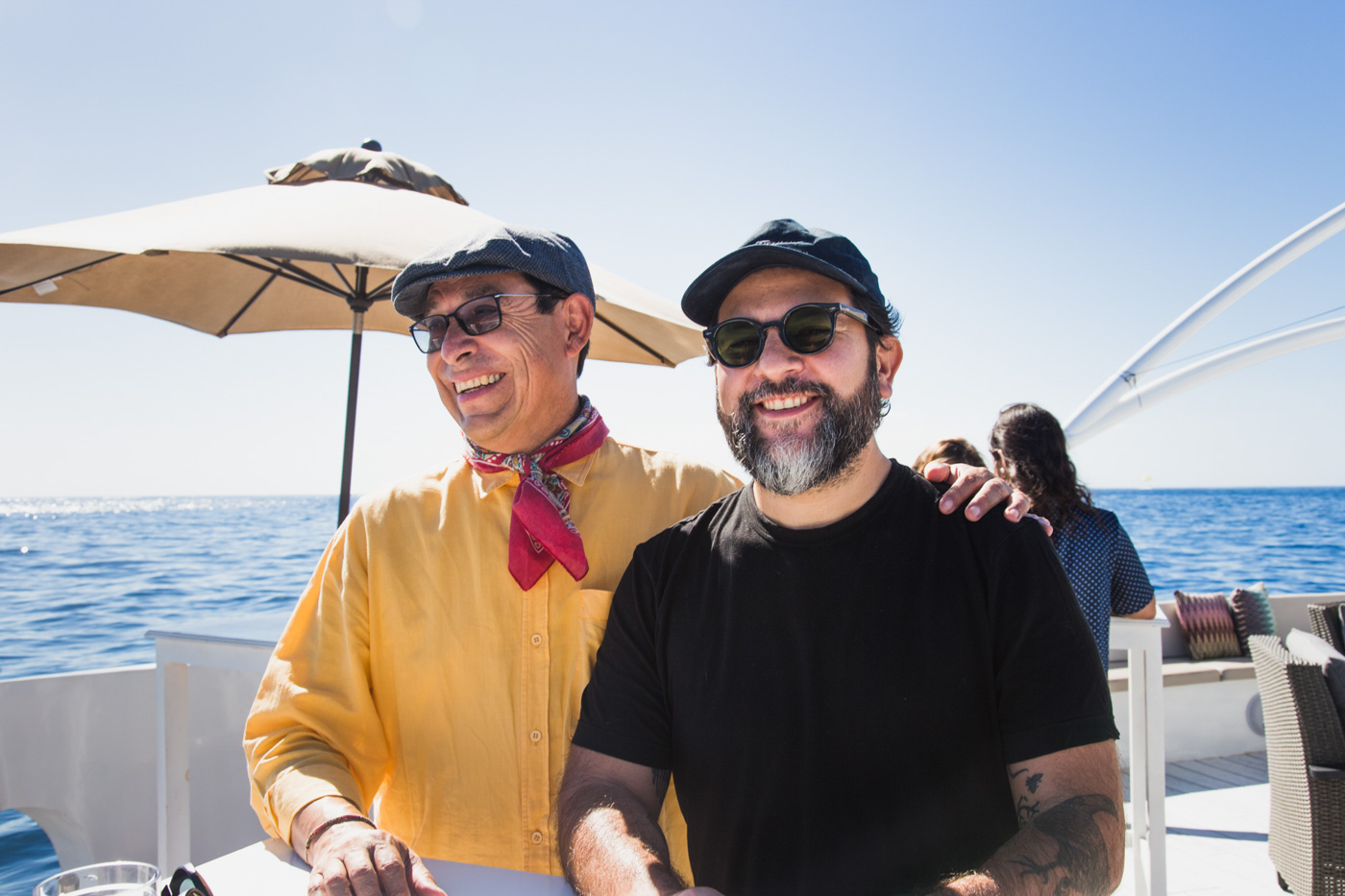
“I’m from Oaxaca. Oaxaca is a city surrounded by mountains and we only eat chile relleno and mole—no fish at all,” Hernandez explains. “Then I went to Ensenada to study oceanography. Even [during] my studies at university I was not very into seafood. Then at the end I started to work with a Japanese lady, and my life changed.” When the debt crisis struck Mexico in 1982, Hernandez’s university cancelled his scholarship. Suddenly unable to pay rent or support his new fiancé, Hernandez took a position working with his thesis teacher’s sister, Sachiko, who owned a fishing business in Japan. “She took me under her wing,” he says. “I started to understand the Japanese mind about fish and seafood. They have a spiritual relationship.” Hernandez credits his respect for fish to this training.
Returning to Ensenada, Hernandez started his own business shipping live lobsters from Baja California. After meeting Olvera, the chef encouraged Hernandez to grow his business to include abalone, clams, urchin and fish. Pujol was his first restaurant account. Olvera and Hernandez’s relationship—now eight years strong—comes with equitable praise and mutual respect. “Ezequiel is an amazing seafood purveyor, but he is also an interesting human being,” says Olvera. “He is always curious about gastronomy and celebrates food in a very authentic way. He has a true passion for eating and he understands that we are all linked in the process.” Speaking with Olvera, I begin to understand that what he seeks in his professional interactions is not a transaction, but a colliding of passions, and a commitment to a similar world view.
Stemming from his formal education and stint in Japan, and holding on to his self-proclaimed hippie image from his college years, Hernandez wanted to create “a sustainable seafood community.” He is inspiring change in a country that has not historically been a hotbed for sustainable industry. The demand for high-quality, sustainable seafood is growing, but small boat fisherman are slow to adapt. Especially for supplying high-end restaurants or exporting to the U.S., the learning curve is steep.
But for those interested in changing the industry, Hernandez is willing to educate. “If [fishermen] want to increase their price, then they have to handle [the product] better,” he says. “We go out with them to the ocean and we teach them how to handle fish, how to kill fish, how to ice it, and we pay them more for the job they’re doing.” While a few are willing to test the vision, Hernandez admits challenging generations-old techniques and practices does not happen overnight. “This work is not as fast as we’d like. The industry is moving more toward aquaculture projects because you have more control.” Despite any bumps along the way, Hernandez is grateful for the ride overall. He smiles through his zen-like aura, “It’s been a really nice adventure.”
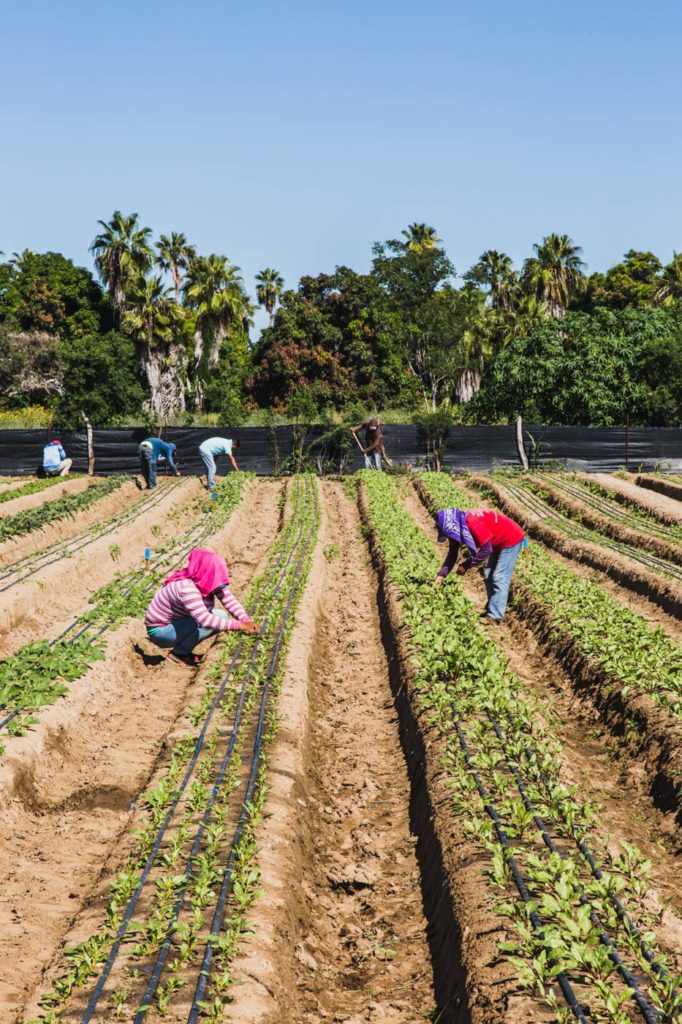

On Land
We plod the earth, scorching under the morning sun with little shade in sight. What looks like a barren landscape from afar reveals small shoots of greenery in its furrows and the occasional wild bush—fodder for our breakfast plate. We follow Baja Farm Fresh owner Jorge Guevara and chef Victor Garrido as they collect ingredients and hand us samples of what’s growing: a shard of the endemic hoja santa, its heart-shaped leaves as wide as a soccer ball, and the purple-magenta bell of a miniature hibiscus flower, used to flavor jamaica agua fresca. Pasote crosses my palate, a delicate herb tasting of a union between anise and mint. More familiar plants appear—kale, beet greens, and arugula so sharp and peppery I want to frame the sprig and put it on my wall as an example for every arugula to follow. The remarkable lettuce can count Olvera a fan as well. “Arugula is a little bit more spicy there,” he says, continuing to explain the variation between sourcing from Cabo versus the area surrounding Mexico City. “The herbs taste different; the tomatoes taste different because of the soil and how they’re grown.”
Guevara attributes much of the bold flavor of his plants to the desert microclimate and sandy soil, which allows for good drainage and fewer threats from bacteria multiplying in standing water. He points to the forested mountains in the distance, indicating the source of water for the farm. “One hundred years ago or a little less the whole area of Baja was unpopulated,” he explains. “So our president started giving land to people to come here and work the land. They put in this pipe that goes [through] the whole area. It’s like an artery.” The water flows only once a week, and is stored in a reservoir to maintain a daily watering schedule.
What began as an export business quickly transformed into a hyper-local, organic and community-focused farming project. Guevara recognized the need for high-quality produce at home, realizing that most Mexican crops were earmarked for foreign markets. “When you go to the supermarket in Cabo, in Tijuana, you get second or third or fourth quality product because the first quality always gets exported,” he adds. “Or if you get good produce, it’s conventional, not organic. Most of the organic goes out of the country. I’d rather keep the produce here locally.” With its nearly twenty-five acres of land, Baja Farm Fresh supplies fifty-five restaurants and hotels, Manta included, and packs Community Supported Agriculture boxes for individuals. Every customer falls within a twenty-five mile radius of the farm and receives produce that was harvested that morning.
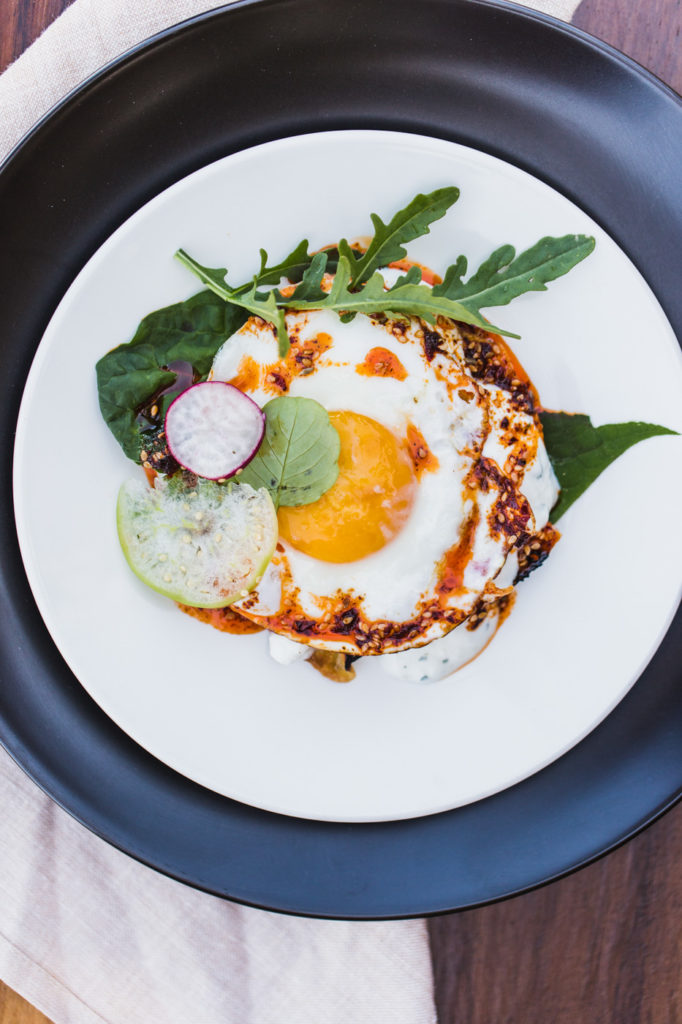
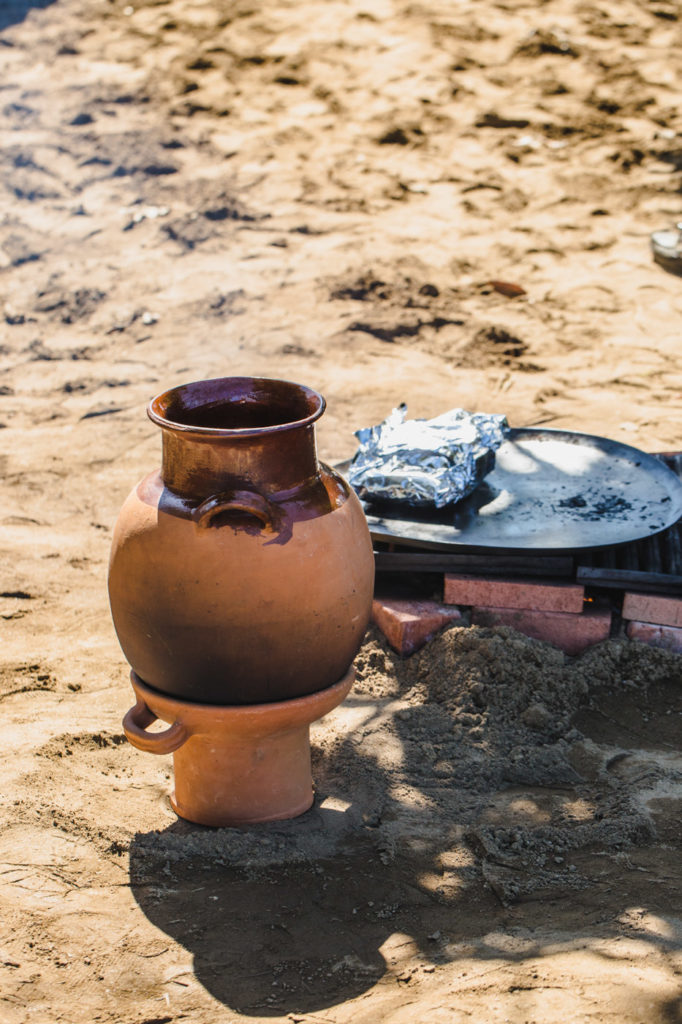
The produce is more expensive than conventional sources, but restaurants like Manta help this model endure. “I’m not bargaining to get cheaper apples,” says Olvera. “If I think the product is really worth it I’m not worried about price point. It’s not the norm, and it’s part of the culture to bargain. It’s something that is extremely Mexican, unfortunately.” However, he does think more chefs are becoming aware that the path to better quality products is lined with fairly paid producers.
Beneath the dappled shade of the largest tree, we gather around a long table set with bundles of vibrant flowers, chia water, freshly squeezed orange juice, and rings of fluffy muffins. Steaming, cinnamon-scented coffee is poured, brewed in an olla over fire nearby. Chef Garrido layers Greek yogurt and torn pieces of hoja santa from our vegetal scavenger hunt under a fried egg, a river of garlicky chili oil, slices of radish and tomatillo, and tendrils of the newfound punchy arugula. I polish off my plate with gusto.
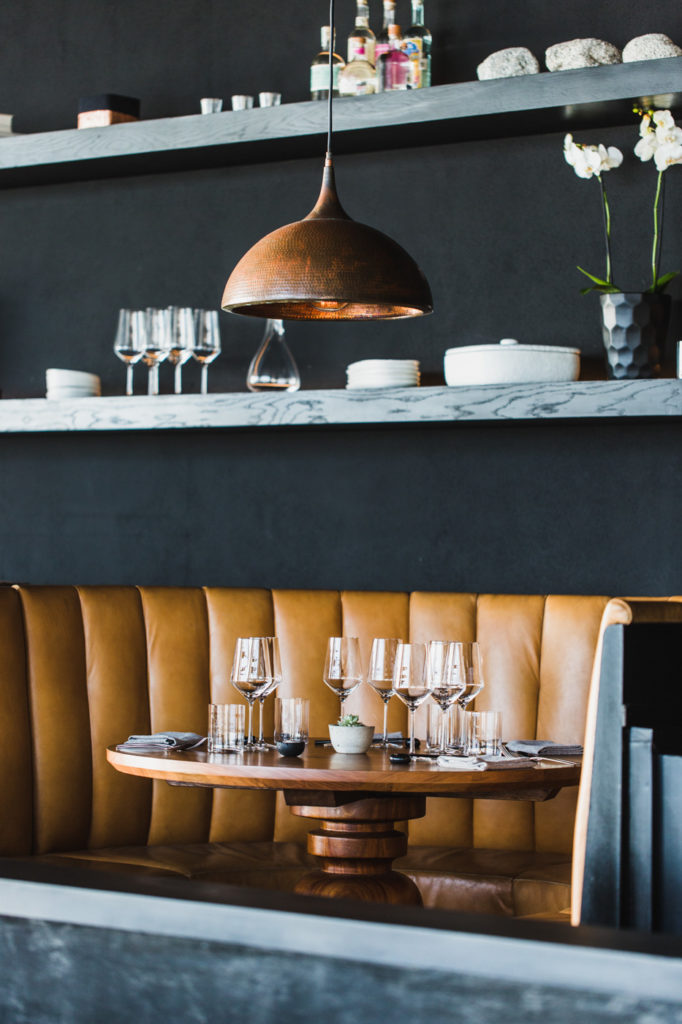

Around the Table
Manta’s dining room is elegant and mildly masculine, all cool stone and copper accents. The black walls curb my gaze out the expansive windows to the real showstopper, the view of the sea, churning and wild beneath the fading pastel sunset. Someone hands me a tiny cup and I’m delighted to taste sake, and surprised to learn that it is brewed in Mexico.
Ezequiel Hernandez is back, extolling merroir, the oceanic version of the terroir found in grape growing. Much like a vintner would pour the same wine from multiple harvest years, he has prepared us two oyster verticals, the first, a selection of oysters of three different ages, all the same variety. The second, the same variety plucked from three distinct locations. The difference is noticeable, and all are delicious. Vibrant green olive oil and Japanese soy sauce accompany the shellfish, and I file that unusual and revelatory pairing in my mind.
As expected, the tasting menu is a canvas for the characters I met over the course of the trip. Looking over an abundant platter of Hernandez’s seafood and vegetables from Guevara’s farm I feel like I know each ingredient personally. Wild mussels, skinny and sharp, their flesh a dark, velvety orange. Spears of purple-hued radishes, refreshingly mild and palate cleansing. Sweet ruby crab, chocolata clams, and a silky uni and striped bass tostada. The following course—lobster gringa, rare-cooked spiny lobster with an adobo of guajillo and garlic over a flour tortilla—resonates deeply. I realized later, talking with Olvera, that maybe it wasn’t my past I was tapping into, but Olvera’s. “When you have such a strong memory of a dish you’re able to play with it more comfortably,” he says. “Gringas was a huge part of my adolescent years. Sometimes you get so caught up with corn tortillas you forget flour tortillas even exist. But in the Northern part of Mexico flour tortillas are really strong.”
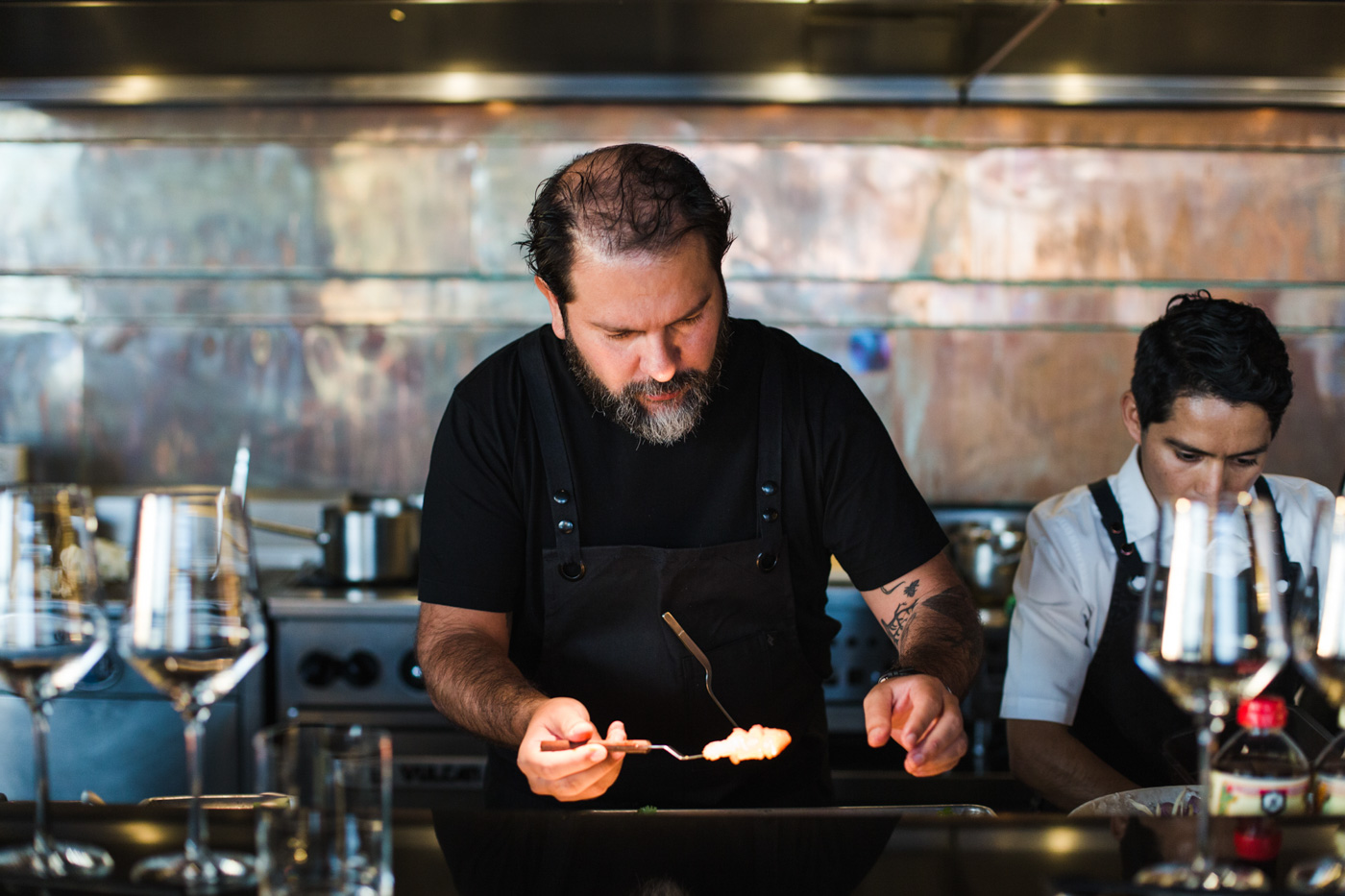
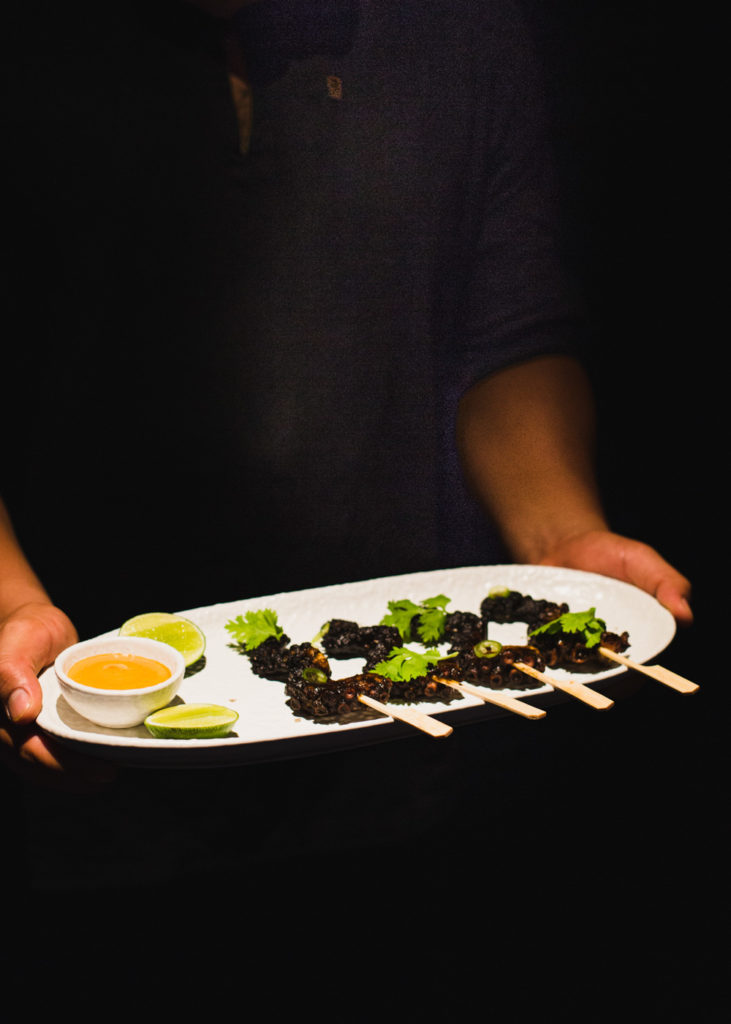
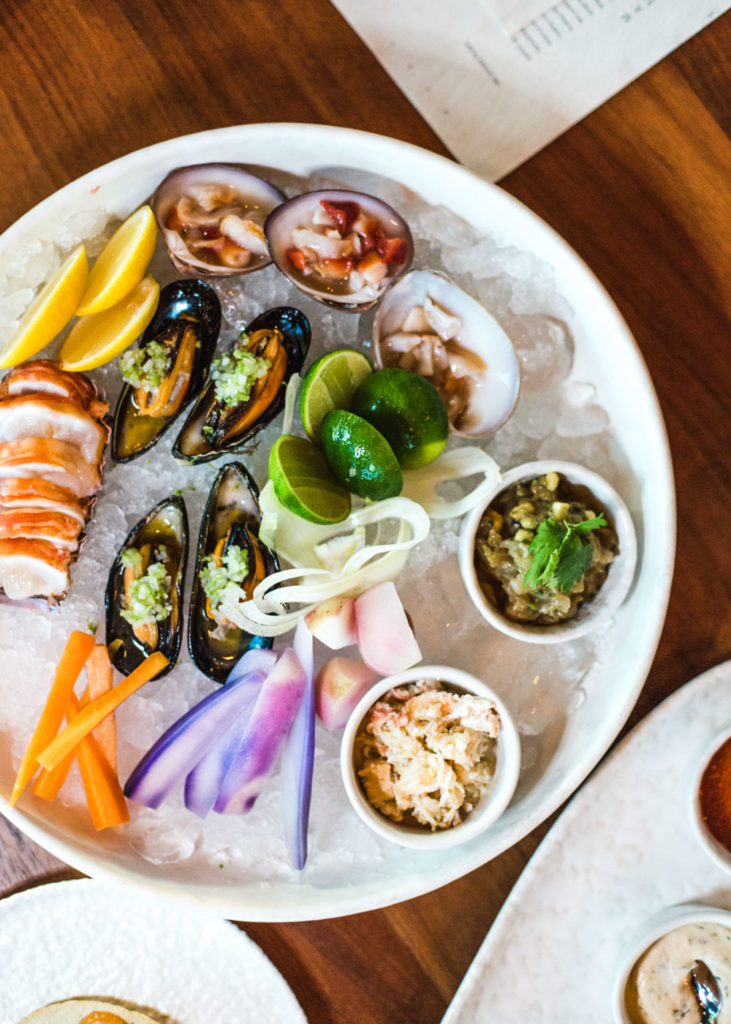
After dinner, across the bar I identify all the players in this culinary production coming together for their final act. They all display a fondness for each other, for letting loose, and for letting Cabo with all its charms claim them. Capri, The Cape’s resident DJ, presides over the playlist spilling from the fog-engulfed speakers. Daniel Quezada, the cocktail developer for Manta, shuttles mezcal from person to person. Hernandez, in an airy salmon pink top, dances, waving his arms above his head as his feet move to a brisk salsa. Guevara shimmies past. Even the architect of the hotel joins in on the action. Chef Enrique makes a surprise appearance on the turntables and proceeds to hold everyone’s musical attention—for hours. And then we are all dancing, veins diluted with cocktails, forgetting it’s four a.m. and there are flights to catch later that morning. Olvera’s voice swims across the phone as I recall this memory. “Whoever said don’t mix work and pleasure was absolutely wrong,” he intones. “I always think progress is being made when people are having fun.”





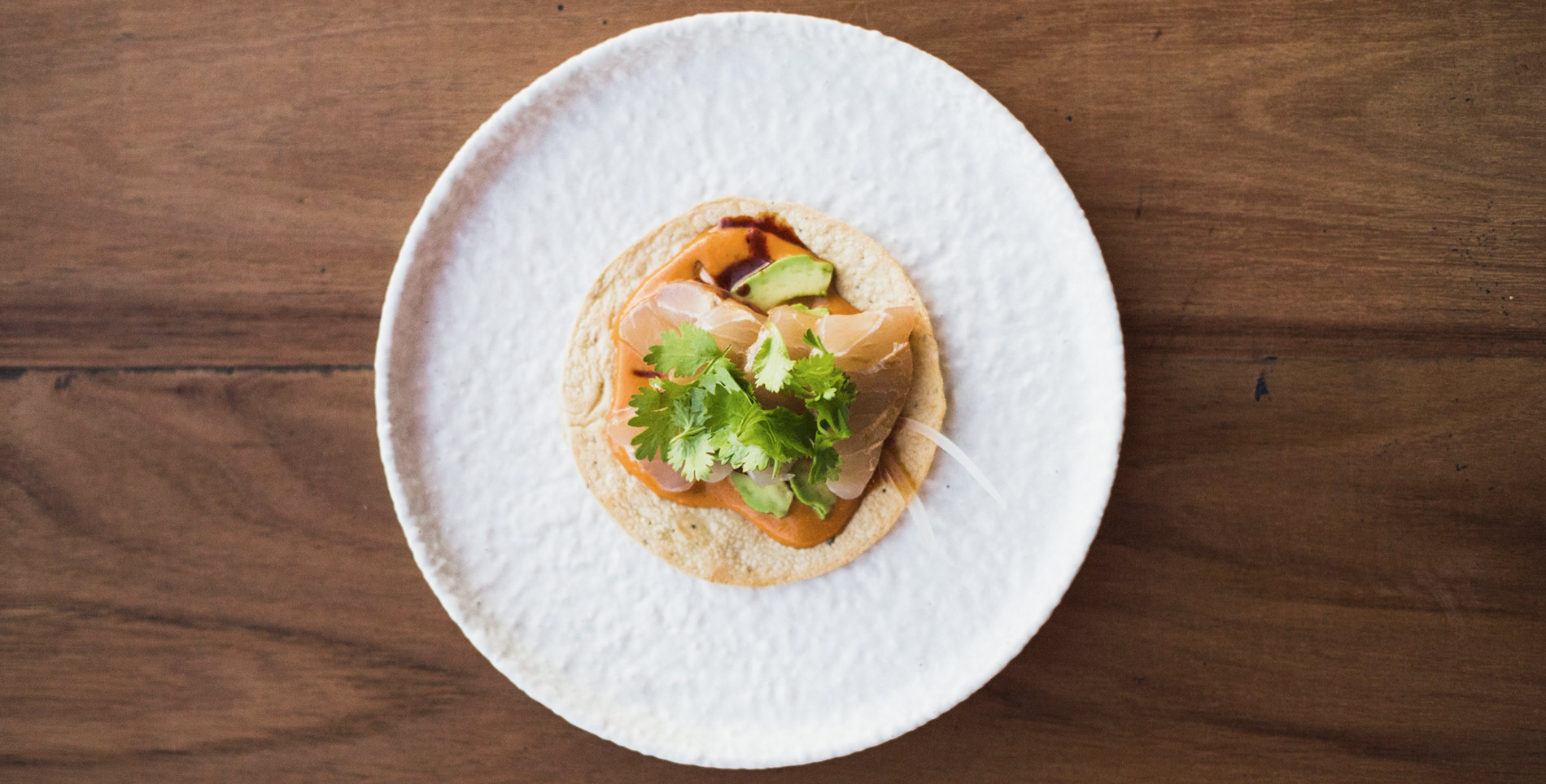

Our comments section is for members only.
Join today to gain exclusive access.